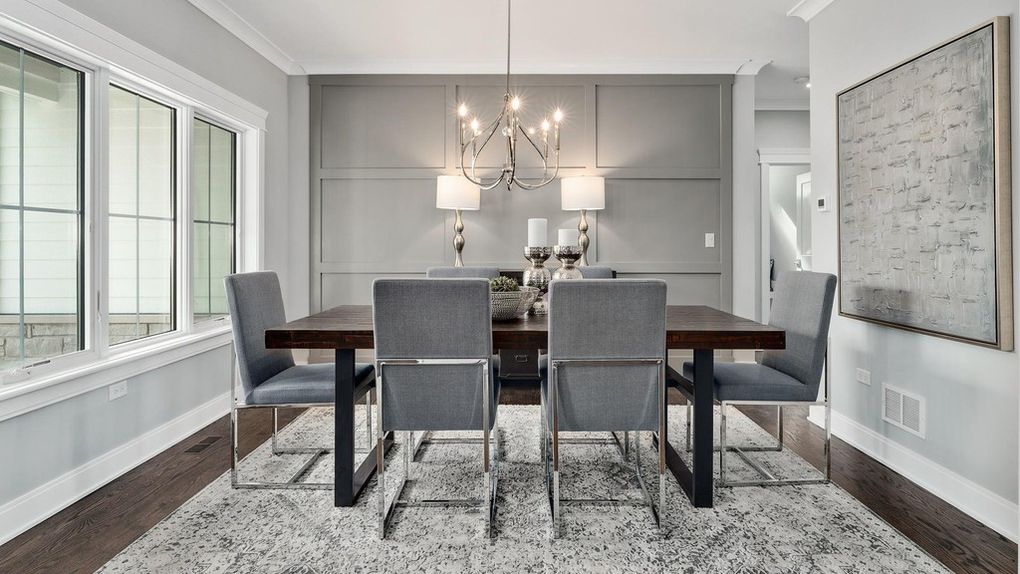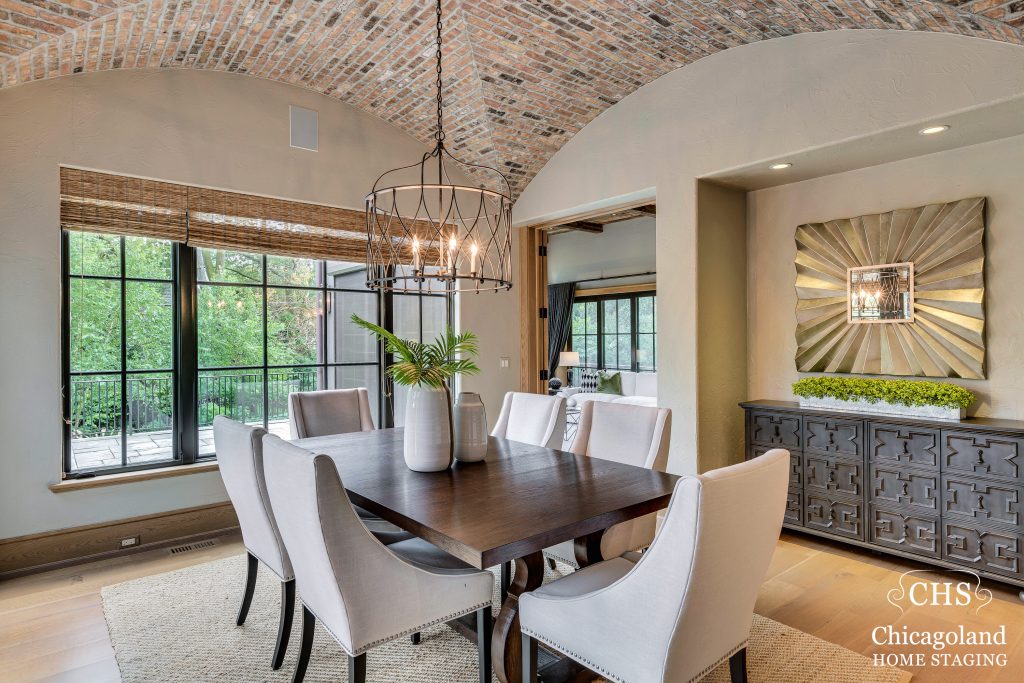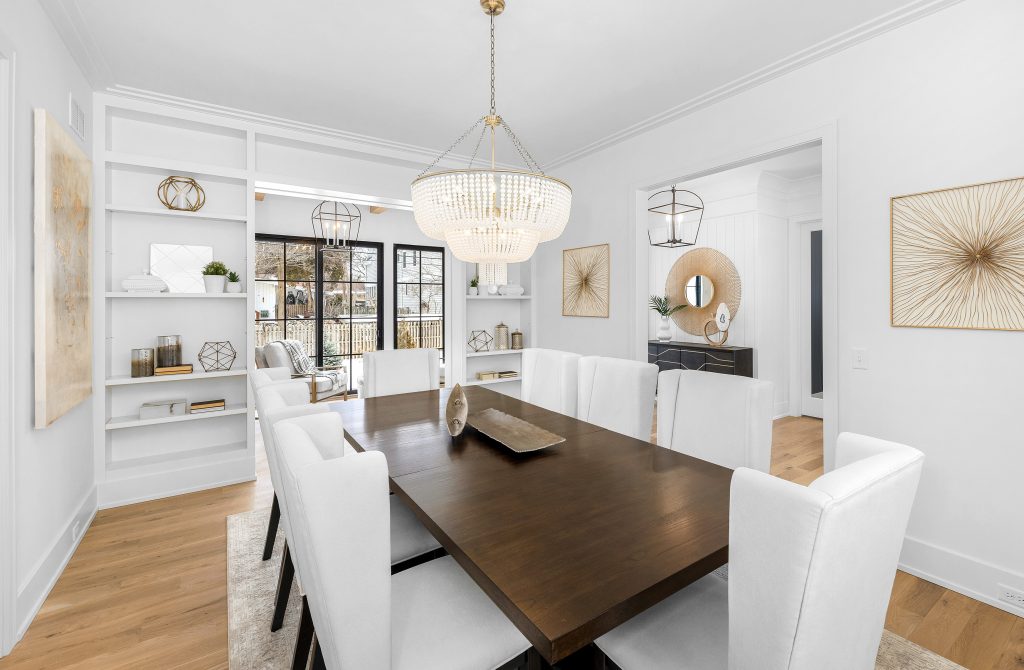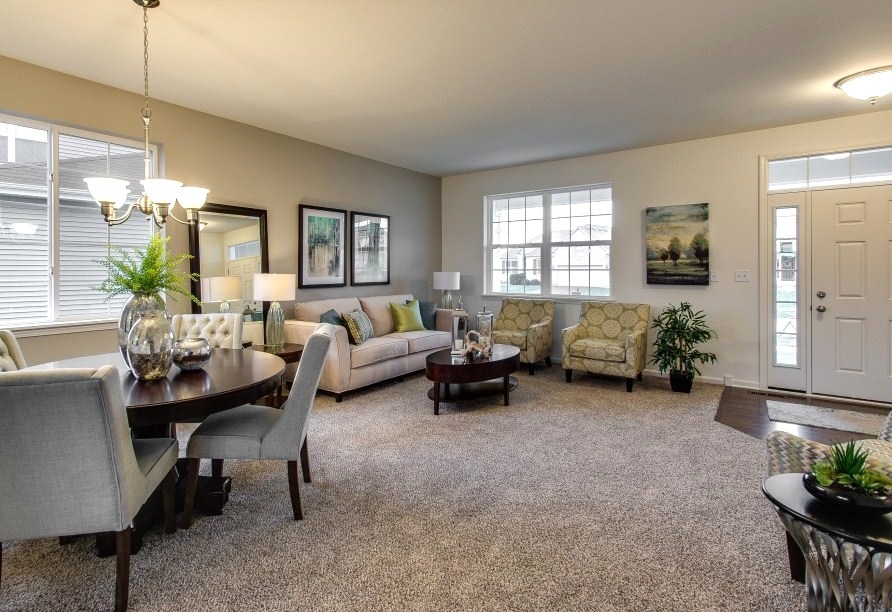Selling or Staying? Easily Highlight Your Dining Room with Home Staging
A dining room is one part living room, one part kitchen allowing you to provide a formal or informal space to display gourmet meals and entertain guests. Except for those special occasions, a dining room may not be a popular hang out space in your home, so it can build up clutter quickly if not properly maintained. This space should always be clutter free, look sophisticated, but feel comfortable. While a dining room in the Naperville area may rank low on a buyer’s wish list, the room can certainly show buyers a lifestyle they could lead if purchasing the property.
Here at Chicagoland Home Staging, we understand what it takes to make a dining room stand out. Here are four tricks to maximize space and get this room show ready for guests or buyers:
Staging a Dining Room: Repairs to Focus On

This room tends to be an afterthought on a homeowner’s project list, many times we’ll see homes with dated, worn out wallpaper—sponge painting, or a bold, dark color on the wall. If this is the case in your home, you may want to consider repainting the walls a neutral hue. It’s important to take note of your dining room’s walls and flooring. If something is outdated, dirty or broken it’s crucial to take action and create a room that says, “stay awhile and eat something.”
Another easy upgrade in this room is updating or replacing your current light fixture. Consider adding a luxurious touch by switching out your ceiling fixture with a chandelier. This is the easiest way to catch a buyer’s eye. There are several chandelier styles to choose from, so pick one that coordinates with the design style and finishes in the room.
Staging a Dining Room: Space Planning

A dining room can appear smaller than usual if it’s cramped with too much or oversized furniture pieces. Often times a homeowner will purchase a dining set to save money without anticipating how much square footage the room has. Dining tables are notorious for their ability to double or triple in size, so make sure the table fits the scale of the room. Remove a leaf or two, along with the extra dining chairs if you need more room. At Chicagoland Home Staging, we want to offer ample walking space for the buyers to walk around the table, so a good rule of thumb is to have 36 inches between the table and the wall or next to any furniture piece. Speaking of other dining room furniture pieces, we recommend no more than two or three furniture pieces in a formal dining room.
Staging a Dining Room: Declutter

When this room is not being used for entertaining, the space can become a makeshift office, toy room or place to drop off items easily allowing for clutter to build up over time. When selling you want to take away all items that are not associated with fine dining. Remove tablecloths from the table, many times they can make the space look dingy or dated. Also, take a look at your tabletop surfaces and the hutch– less is more when displaying items in these areas.
Staging a Dining Room: Accessories to Use

As in any other room using accessories in this space is key to describe that “entertaining” or “hosting” lifestyle, so many homemakers desire. Consider displaying items you’d usually find in a fine dining restaurant:
Greenery and florals – The main accessory on a dining table is a centerpiece. Choose a centerpiece that is seasonal mixing a combination of greenery, flowers, even candles or any other seasonal décor. Make sure the piece is to scale with the table. The centerpiece should be the right size to fill the center of the table without being too big or too small.
Soft goods – Plan on replacing the tablecloth with a table runner or place mats. Play with different textures when using these items to create interest. You can also play with color or go neutral.
Wall art – Often times we’ll use a large mirror in a dining room to not only reflect light around the room but to highlight the gorgeous chandelier hanging above. We also use large pieces of abstract art overtop of credenzas to fill empty space and create an interesting focal point.
Rug – When choosing a rug for this room it’s important to consider the measurement of your dining room table. The rug should be big enough to allow for the dining chair to stay placed firmly on the rug when pulled out for seating. This accessory can also be used as art to provide texture, pattern or color in the room.
Lighting – We’ve already talked about chandeliers, but another lighting option to have in this room can be wall sconces to set the scene. They come in a variety of styles so choose one that fits the hardware and style of the room. If you have a large, empty tabletop surface try placing two identical table lamps on either side of the piece of furniture to lighten up the space.
Dishware – If you have a hutch in the room, highlight a few of the empty shelves with simple, elegant dishware, preferable white. You can also add crystal pieces, stemware or a tea set to make the space look lived in. It’s not necessary to set a dining room table when staging, however, you can leave a stack of dishware on the table to suggest the idea of entertaining.
Decorative Accents – Let’s face it there are a lot of tabletop surfaces in a dining room, so plan on using a few large pieces like vases, bowls or sculptures to help create a statement or further a theme. Use a piece on its own, or group smaller items in odd numbers to provide one cohesive look.
Need help staging your Naperville dining room? Contact us today! We’d be more than happy to assist you with all your home staging needs.




